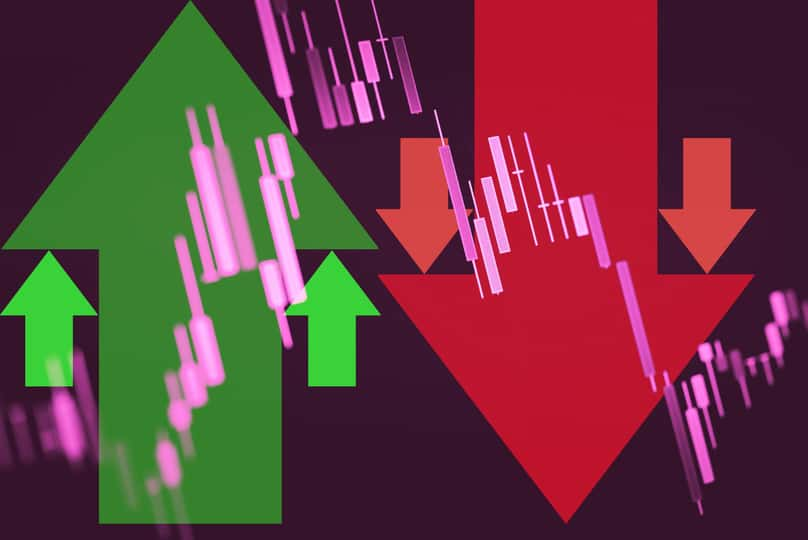Renowned auto manufacturer General Motors (GM - Get Rating) in Detroit, Mich., recently reported its results for the fourth quarter, ended Dec. 31, 2021. Its revenue declined 10.4% year-over-year to $33.58 billion, while its net income fell 38.8% year-over-year to $1.74 billion. GM’s shares are currently trading 20.4% below their 52-week high of $67.21, which they hit on Jan. 5, 2022. Also, the stock has declined 8.7% in price year-to-date.
GM was dethroned as the highest-selling automobile manufacturer in the United States by Toyota Motor Corporation (TM) last year, after holding the spot for 90 years. GM’s sales declined to 2.2 million vehicles, compared to 2.5 million vehicles sold in the year-ago period. GM has announced plans to go all-electric by 2035, a strategy that is aligned with the changing global automotive industry. However, Cox Automotive analyst Michelle Krebs said, “They have committed to going all electric, not doing hybrids, not doing plug in hybrids, and jumping right to electric vehicles. So, it’s a huge risk. It’s bold, it’s very ambitious. And the risk is, well, you know, can they do it when they do it, especially in light of range costs and infrastructure issues?”
So, with domestic auto manufacturers ceding market share to international automakers, we think could be wise to add fundamentally strong auto manufacturers Volkswagen AG (VWAGY - Get Rating), Daimler AG (DDAIF - Get Rating), and Honda Motor Co., Ltd. (HMC - Get Rating) to one’s portfolio.
Volkswagen AG (VWAGY - Get Rating)
Headquartered in Wolfsburg, Germany, VWAGY manufactures and sells automobiles. It operates in four segments: passenger cars; light and heavy commercial vehicles; power engineering; and financial services. The company owns brands that include Audi, Porsche, Lamborghini, and Bugatti.
On Nov. 3, 2021, VWAGY announced that it had formed a partnership with EIT InnoEnergy and would become a shareholder in the EU-backed venture. Jens Wiese, VWAGY’s head of group M&A, investment advisory and partnerships, said, “The partnership with EIT InnoEnergy will help us find the most promising companies from all areas of the energy transition, which we can then support in scaling their business models.”
VWAGY’s earnings after tax for the third quarter, ended Sept. 30, 2021, was €2.90 billion ($3.27 billion), representing a 5.6% increase year-over-year. Its cash flow from investing activities attributable to operating activities increased 67.2% year-over-year to €6.58 billion ($7.43 billion). And the company’s sales revenue for the first nine months of fiscal 2021 increased 20% to €186.59 billion ($210.73 billion) compared to the prior-year period.
Analysts expect VWAGY’s EPS and revenue for fiscal 2021 to increase 69.5% and 9.3%, respectively, year-over-year to $3.22 and $277.71 billion. Over the past year, the stock has gained 35% to close its last trading session at $29.13.
VWAGY’s POWR Ratings reflect this promising outlook. It has an overall B rating, which equates to a Buy in our proprietary rating system. The POWR Ratings are calculated by considering 118 distinct factors, with each factor weighted to an optimal degree.
VWAGY has a B grade for Value and Stability. In the Auto & Vehicle Manufacturers industry, it is ranked #10 of 69 stocks. Click here to see the additional ratings of VWAGY for Growth, Momentum, Sentiment, and Quality.
Daimler AG (DDAIF - Get Rating)
Based in Stuttgart, Germany, DDAIF develops, produces, and distributes cars and vans in Germany. Its segments include Mercedes-Benz Cars; Mercedes-Benz Vans; and Daimler Financial Services. The cars segment includes vehicles under the Mercedes-Benz brand, including Mercedes-AMG and Mercedes-Maybach. The Vans segment sells vans under the Mercedes-Benz and the Freightliner brand, while the financial services segment supports its automotive brands’ sales worldwide.
On Jan. 20, 2022, DDAIF announced that it would integrate Luminar Technologies, Inc.’s (LAZR) lidar sensors into its future production vehicles to enable autonomous driving. It also acquired 1.5 million shares of LAZR. LIDAR is a key ingredient in facilitating autonomous driving. It uses near-infrared light to detect objects, which helps cars pilot themselves.
For its fiscal third quarter, ended Sept. 30, 2021, DDAIF’s adjusted EBIT increased 4% year-over-year to €3.61 billion ($4.07 billion). The company’s net profit increased 19% year-over-year to €2.57 billion ($2.90 billion). In addition, its revenue for the nine months ended Sept. 30, 2021, increased 15.6% year-over-year to €124.58 billion ($140.70 billion).
For its fiscal 2021, DDAIF’s EPS and revenue are expected to increase 234.3% and 8.1%, respectively, year-over-year to $13.64 and $200.90 billion. It surpassed the Street’s EPS estimates in each of the trailing four quarters. Over the past year, the stock has gained 9% in price to close the last trading session at $78.74.
DDAIF’s POWR Ratings reflect this promising outlook. The stock has an overall B rating, which equates to Buy in our proprietary rating system.
It has an A grade for Value and a B grade for Stability and Quality. It is ranked #4 in the Auto & Vehicle Manufacturers industry. To see the other ratings of DDAIF for Growth, Momentum, and Sentiment, click here.
Honda Motor Co., Ltd. (HMC - Get Rating)
Based in Tokyo, Japan, HMC develops, manufactures, and distributes automobiles, power products, motorcycles, and other products. It operates through four segments: Motorcycle Business; Automobile Business; Financial Services Business; and Life creation and Other Businesses. The company also sells spare parts, and provides after-sale services through retail dealers, independent distributors, and licensees.
On Oct. 14, 2021, HMC announced plans to debut its first EV brand in the world’s highest-selling EV market, China. HMC and its local partners Dongfeng Motor and GAC Group will set up new production lines to roll out EVs. HMC is launching its e:N Series brand under its well-recognized “H” emblem. The companies plan to roll out 10 models over the next five years.
HMC’s sales revenue for the six months ended Sept. 30, 2021, increased 21% year-over-year to ¥6,988.20 billion ($61.02 billion). The company’s operating profit increased 161.2% year-over-year to ¥442.10 billion ($3.86 billion). Also, its profit increased 143.2% year-over-year to ¥389.20 billion ($3.39 billion).
Analysts expect its revenues for fiscal 2022 to increase 349.8% year-over-year to $127.24 billion. Its EPS for fiscal 2023 is expected to increase 29.7% year-over-year to $3.43. Over the past year, the stock has gained 11% in price to close the last trading session at $29.77.
HMC’s strong fundamentals are reflected in its POWR Ratings. It has an overall B rating, which translates to a Buy in our proprietary rating system.
HMC has an A grade for Value and a B grade for Stability and Sentiment. In the Auto & Vehicle Manufacturers industry, it is ranked #5. Click here to see the additional ratings of HMC for Growth, Momentum, and Quality.
Want More Great Investing Ideas?
VWAGY shares were trading at $29.08 per share on Thursday morning, down $0.05 (-0.18%). Year-to-date, VWAGY has declined -0.41%, versus a -4.85% rise in the benchmark S&P 500 index during the same period.
About the Author: Dipanjan Banchur

Since he was in grade school, Dipanjan was interested in the stock market. This led to him obtaining a master’s degree in Finance and Accounting. Currently, as an investment analyst and financial journalist, Dipanjan has a strong interest in reading and analyzing emerging trends in financial markets. More...
More Resources for the Stocks in this Article
| Ticker | POWR Rating | Industry Rank | Rank in Industry |
| VWAGY | Get Rating | Get Rating | Get Rating |
| DDAIF | Get Rating | Get Rating | Get Rating |
| HMC | Get Rating | Get Rating | Get Rating |
| GM | Get Rating | Get Rating | Get Rating |





